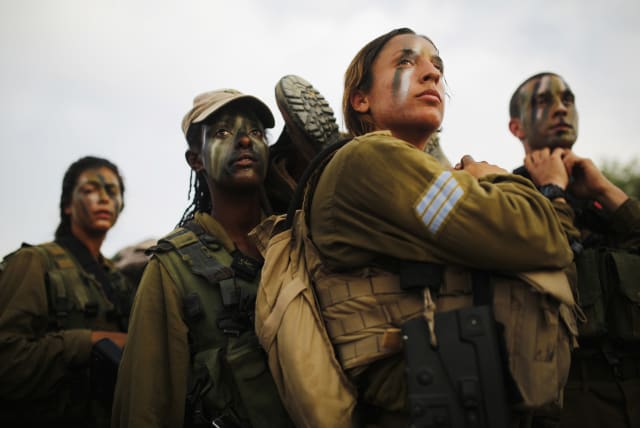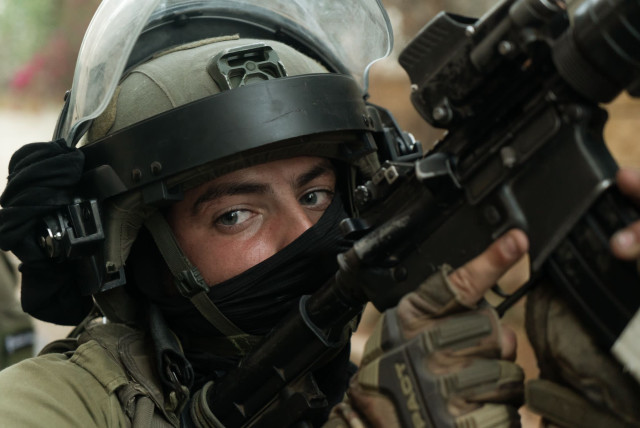IDF draft report: Which Israeli cities top draft statistics?

Tel Aviv finished in 13th place for men and 9th place for women, with an even lower rate of draftees from Northern Tel Aviv.
Modi’in maintained its reign atop the list of the highest percentage of potential IDF draftees among large cities, with a rate of almost 91% for men. Tel Aviv finished in 13th place for men and 9th place for women, with an even lower rate of draftees from Northern Tel Aviv wishing to join combat units.
Besides Modi’in, the top three for male draftee trends were Ra’anana in second, and Kfar Saba in third.
The three top cities were scored not only by the total number of men who served from the potential draftee class but also by how many draftees ended up serving as officers and how many draftees took on combat roles.
The respective scores of the top three were 83, 79 and 78 when all of those factors were taken into account.
Tel Aviv continued its deteriorating fall to 13th place for male draftees and ninth place for female draftees, with Northern Tel Aviv having an especially low number of male draftees in combat units.
The mix of those statistics along with the unusually large percentage of Northern Tel Aviv males who make it into IDF Unit 8200’s cyber and signal intelligence units continue to contribute to the argument that rich Tel Aviv corridor families use the military to pave the way for hi-tech jobs while letting poorer families fight in dangerous combat roles on their behalf.
And yet, IDF sources said that 82% of Northern Tel Aviv males join the IDF, a very high number and that in the broad trends of wealthy cities beyond Tel Aviv, the rates of joining combat units are still high.
Of course, Tel Aviv is far from last, with Jerusalem finishing in 18th for male draftees and Bnei Brak finishing last in 23rd place.
The IDF also noted that it is investing far more resources now in recruiting periphery students at young ages into hi-tech and cyber programs to enable them to be prepared for a Unit 8200 intelligence track, like their Tel Aviv corridor counterparts.
In trends for women draftees into the IDF, Modi’in led with a score of 83 (actual draft percentage 84%) followed by Herzliya with an 80 (actual draft percentage 78%) and Ramat Gan with 79 (actual draft percentage 77%.)
Beitar Illit finished last for female draftees.
Ness Ziona, Hod Hasharon perform strongly in IDF draft numbers
The top three draftee trends for males for medium size cities were: Ness Ziona, Kiryat Ono and Hod Hasharon.
For females for medium cities, the top three draftee trends were for Ness Ziona, Hod Hasharon and Ramat Hasharon.
Givat Shmuel, Yehud and Kfar Yonah rounded out the top three small cities for male draftee trends, while Kiryat Ono, Kfar Yonah and Yokne’am Illit rounded out the top three small cities for female trends.
The IDF reported that the top three trends of large cities serving in the IDF were Jerusalem (58%), Beit Shemesh (57%) and Modi’in (56%), but then admitted that these statistics ignored the large numbers of haredim (ultra-Orthodox) and others living in Jerusalem and Beit Shemesh who are viewed as non-draftable.
In other words, this specific set of statistics could be said to be significantly imbalanced allowing cities like Jerusalem to be held to a double standard by ignoring large sectors of their population, whereas cities where all sectors are viewed as draftable, then are indirectly penalized.
SDEROT JUMPED seven places in improving its draftee percentages for men, while Nof Hagalil jumped six places improving its trend.
A senior IDF Human Resources official said, “The data clearly shows that in 2023 the model of the people’s army exists and remains strong.”
The IDF also said that its “paradigm shift” in how it drafts the next generation of potential soldiers has had significant success.
According to the IDF, it now solves financial, social and psychological issues for many soldiers before they are drafted.
This approach avoids much of the first year of such soldiers going off track due to their living with these complex issues.
In addition, the IDF said that its change from deciding draftees’ fitness for elite units based on their Draft Order Day and standardized academic tests in favor of a more holistic approach and multiple chances to impress the IDF, such as the Day 100 tryouts, has made elite units more open to those living in the periphery.
Regarding women’s service in “significant” units in general, the IDF emphasized a seven-year jump from 2,200 women in these roles in 2016 to 7,000 in 2023.
IDF not letting women serve in certain units
In addition, the IDF expects a jump to between 600-800 women to try out for Field Day, relating to trying to enter combat units in November.
Despite these numbers, there are still units which the IDF is not letting women serve in or has made getting accepted to those units difficult.
While the IDF still has problems in drafting from the Ethiopian-Jewish, Arab, Bedouin and Druze sectors, the report said that 500 Ethiopians were recently drafted, matching a three-year high.
Also, the IDF said it gave an award to the Israeli-Arab city of Yanuh Jat and the Druze city of Zarzir for higher draft rates.
Next, the IDF released ratings for individual schools with the highest draft rates for males, with Harel High School in Mevaseret Zion winning with a 95.4% and an overall 76 score taking into account trends for serving as officers and combat units.
Maccabim-Reut High School from Modi’in led female draftees with a 96.4% rate and a composite score of almost 76.
The senior IDF official added, “The IDF is the meeting point and anchor of the melting pot of all of the cross-sections of Israel,” noting that by balancing respecting diversity with molding different groups into working toward common national goals, both the IDF and the country are strengthened.
Jerusalem Post Store
`; document.getElementById("linkPremium").innerHTML = cont; var divWithLink = document.getElementById("premium-link"); if (divWithLink !== null && divWithLink !== 'undefined') { divWithLink.style.border = "solid 1px #cb0f3e"; divWithLink.style.textAlign = "center"; divWithLink.style.marginBottom = "15px"; divWithLink.style.marginTop = "15px"; divWithLink.style.width = "100%"; divWithLink.style.backgroundColor = "#122952"; divWithLink.style.color = "#ffffff"; divWithLink.style.lineHeight = "1.5"; } } (function (v, i) { });


